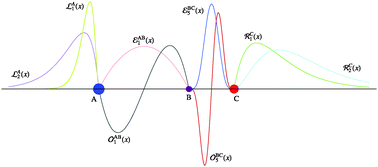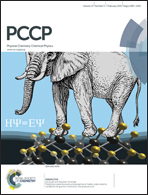Chemistry in one dimension
Abstract
We report benchmark results for one-dimensional (1D) atomic and molecular systems interacting via the Coulomb operator |x|−1. Using various wavefunction-type approaches, such as Hartree–Fock theory, second- and third-order Møller–Plesset perturbation theory and explicitly correlated calculations, we study the ground state of atoms with up to ten electrons as well as small diatomic and triatomic molecules containing up to two electrons. A detailed analysis of the 1D helium-like ions is given and the expression of the high-density correlation energy is reported. We report the total energies, ionization energies, electron affinities and other physical properties of the many-electron 1D atoms and, using these results, we construct the 1D analog of Mendeleev's periodic table. We find that the 1D periodic table contains only two groups: the alkali metals and the noble gases. We also calculate the dissociation curves of several 1D diatomics and study the chemical bond in H2+, HeH2+, He23+, H2, HeH+ and He22+. We find that, unlike their 3D counterparts, 1D molecules are primarily bound by one-electron bonds. Finally, we study the chemistry of H3+ and we discuss the stability of the 1D polymer resulting from an infinite chain of hydrogen atoms.


 Please wait while we load your content...
Please wait while we load your content...